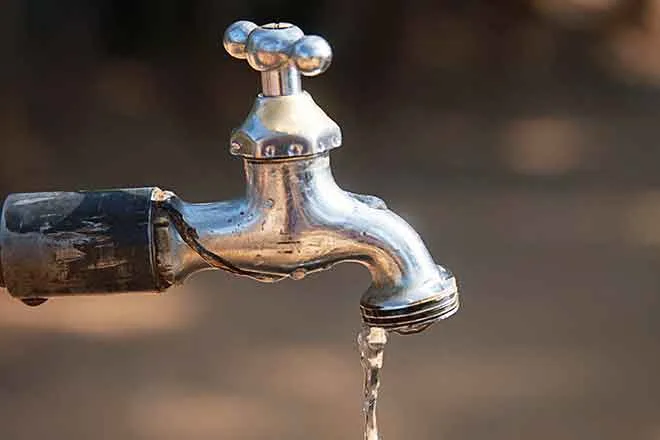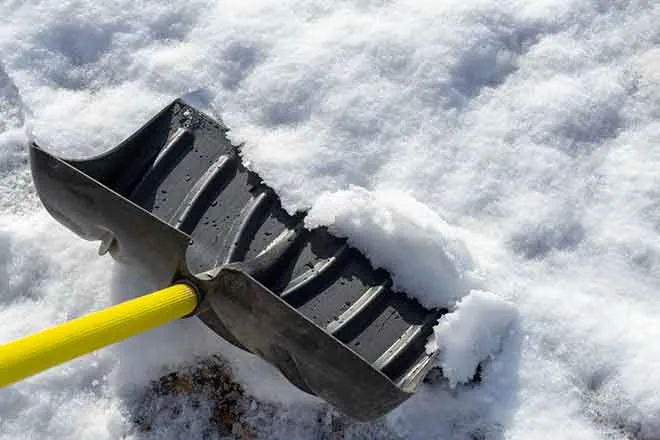
From the Extension Agent’s Desk – Fall and Winter Watering
From Fact Sheet No. 7.211 – by J.E Klatt and R. Cox 3/13
Dry air, low precipitation, little soil moisture, and fluctuating temperatures are characteristics of fall and winter in many areas of Colorado. Often there is little or no snow cover to provide soil moisture from October through March. Trees, shrubs, perennials and lawns under these conditions may be damaged if they do not receive supplemental water. The result of long, dry periods during fall and winter is injury or death to parts of plant root systems. Affected plants may appear perfectly normal and resume growth in the spring using stored food energy. Plants may be weakened and all or parts may die in late spring or summer when temperatures rise. Weakened plants also may be subject to insect and disease problems.
Plants Sensitive to Drought Injury
Woody plants with shallow root systems require supplemental watering during extended dry fall and winter periods. These include European white and paper birches; Norway, silver, red, Rocky Mountain and hybrid maples; lindens, alders, hornbeams, dogwoods, willows, and mountain ashes. Evergreen plants that benefit include spruce, fir, arborvitae, yew, Oregon grape-holly, boxwood, and Manhattan euonymus. Woody plants also benefit from mulch to conserve soil moisture. Herbaceous perennials and ground covers in exposed sites are more subject to winter freezing and thawing. This opens cracks in soil that expose roots to cold and drying. Winter watering combined with mulching can prevent this damage (See fact sheet 7.214, Mulches for Home Grounds.) Lawns also are prone to winter damage. Newly established lawns, whether seeded or sodded, are especially susceptible. Susceptibility increases for lawns with south or west exposures.
Watering Guidelines
Water only when air temperatures are above 40 degrees F. Apply water at mid-day so it will have time to soak in before possible freezing at night. A solid layer (persisting for more than a month) of ice on lawns can cause suffocation or result in matting of the grass. Plants receiving reflected heat from buildings, walls and fences are more subject to damage. The low angle of winter sun makes this more likely on south or west exposures. Windy sites result in faster drying of sod and plants and require additional water. Lawns in warm exposures are prone to late winter mite damage. Water is the best treatment to prevent turf injury (see fact sheet 5.505, Clover and Other Mites of Turfgrass.) Monitor weather conditions and water during extended dry periods without snow cover – one to two times per month.
Newly Planted vs. Established Plants
Newly planted trees are most susceptible to winter drought injury. Trees generally take one year to establish for each inch of trunk diameter. For example, a two inch diameter (caliper) tree takes a minimum of two years to establish under normal conditions. Trees obtain water best when it is allowed to soak into the soil slowly to a depth of 12 inches. Methods of watering trees include: sprinklers, deep-root fork or needle, soaker hose or soft spray wand. Apply water to many locations under the dripline and beyond if possible. If using a deep-root fork or needle, insert no deeper than 8 inches into the soil. As a general survival rule, apply 10 gallons of water for each diameter inch of the tree. For example, a two-inch diameter tree needs 20 gallons per watering. Use a ruler to measure your tree’s diameter at 6" above ground level. Newly planted shrubs require more water than established shrubs that have been planted for at least one year. The following recommendations assume shrubs are mulched to retain moisture. In dry winters, all shrubs benefit from winter watering from October through March. Apply 5 gallons two times per month for a newly planted shrub. Small established shrubs (less than 3 feet tall) should receive 5 gallons monthly. Large established shrubs (more than 6 feet) require 18 gallons on a monthly basis. Decrease amounts to account for precipitation. Water within the dripline of the shrub and around the base. Herbaceous perennial establishment periods vary. Bare root plants require longer to establish than container plants. Perennials transplanted late in the fall will not establish as quickly as those planted in spring. Winter watering is advisable with late planted perennials, bare root plants, and perennials located in windy or southwest exposures.
Quick Facts
• Water trees, shrubs, lawns, and perennials during prolonged dry fall and winter periods to prevent root damage that affects the health of the entire plant.
• Water only when air and soil temperatures are above 40 degrees F with no snow cover.
• Established large trees have a root spread equal to or greater than the height of the tree. Apply water to the most critical part of the root zone within the dripline.

















